“The truth is not for all men, but only for those who seek it.”
-Ayn Rand
Most people from western culture are familiar with the legend of Atlantis. The philosopher Plato’s ancient Greek writings on advanced civilizations are very famous. Well, Dwarka is the Atlantis of the east. It’s allegedly a 12,000-year-old city off the coast of India. However, consensus history states that modern civilization only goes back 6,000 years or so. Then again there’s been many discoveries in recent years that bring the accepted version of human history into question. There is profit in maintaining established canon though. So the mainstream establishment sweeps places like Dwarka under the rug. Becoming something called forbidden archaeology. Now, I’m not trying to say that Dwarka being 12,00 years old is true, but the ideas around the Atlantis of the East are fascinating. And lends credence to the idea that, there’s much more to the story of humanity than meets the eye.

The location of this mythical city
In the ancient Indian texts of the Mahabharata, Krishna rules over the grand city of Dwarka. A place thought to have only existed in a legend similar to the city of Troy from Greek tales. However, archaeologists actually discovered the mythical city. And just like Troy, Indian archaeologists were amazed to find Dwarka sunken beneath the sea off the Indian coast. Since the beginning of the 20th-century archaeologists have investigated the site. Supposedly some of the artifacts carbon-dated to be a staggering 32,000 years old. If this is true it would make Dwarka the oldest known civilization in human history.
[the_ad_placement id=”manual-2″]
It’s a very advanced city. Archaeologists used sonar to get a real scale of its size, and it is immense. Twice the size of Manhattan in New York. Divers have brought many perplexing relics up to the surface. The deeper they dug, the more ancient the artifacts proved to be through carbon dating. The diving teams discovered so many ancient wonders it seemed like Dwarka may be the beginning of an archaeological renaissance. But, all of the sudden in 1999 the Indian government put a stop to all further exploration of the sunken city. The site became banned from further research internationally.
Many have wondered why the Indian government would do this. While avoiding jumping to conspiracy theories, it’s strange. People who’ve tried to make a correspondence with the teams whom in the past were involved with researching the site hit a brick wall. Not only will they refuse to answer any questions, but they refuse to work with anyone interested in the mysteries of Dwarka. The archaeological team was incredibly successful. Why would they halt all research so suddenly for no apparent reason? And why would the government ban any further research? The lack of transparency is what really drives conspiracy theorists nuts concerning Dwarka. But there could be many valid reasons why the government and researchers remain silent on the matter.
In the Mahābhārata Dwarka has immense importance. The Mahābhārata are ancient epics similar to Greeks tales of the Trojan War and the Iliad, which also has a powerful influence on Indian religious mythology. In one of the epics, the city of Dwarka (historically called Dvārakā) was a place the godlike being known as Krishna lived. Hare Krishna was the eighth mortal incarnation of the supreme being Vishnu. One of the principal deities of Hinduism. Though there are some traditions in which Krishna is just a mortal man. So there are different versions of Krishna as well as how his city came to be.

Divine Krishna, ruler of Dwarka
Krishna’s uncle ruled the city in one version. But a tyrant killed him then usurped the throne. The god incarnation then returned to kill the tyrant, which started a long war with another king. In another version, the personal steed of the god Vishnu shows him where the city will one day be. Another version of the story says Krishna uses Vishwakarma, the god of construction to build the city. The god’s supernatural power responsible for the wonders of Dwarka, not human beings. There are even more versions on the origins of Dwarka, but all have the theme of Krishna being the city’s ruler. He’s also the leader of the forces of good in the universe and a major player in an epic conflict. Dwarka would come under attack in a titanic war. Where according to the ancient text of the Mahābhārata, incredibly advanced technology was used.
Theories on Dwarka can get pretty weird. I’m not going to go too much into this because it can quickly turn into ancient alien speculations. Though there are things in the Mahābhārata that can be translated as some sort of ancient advanced technology. There are references to highly devastating advanced weaponry in the text. Even leading to some more imaginative speculations to think Krishna’s war could have been a nuclear one. Hell, there’s even a version of the tale where Krishna straight up comes from a different world, making him a literal alien. So it’s no wonder ancient alien theorists love Krishna and the Mahābhārata.
[the_ad_placement id=”manual-2″]
There are even weapons that sound similar to rockets or missiles in the Mahābhārata. As well as sci-fi-like weaponry that shoots out beams of energy. With devastating blasts that wipe out entire armies that cause the land in the area to turn to poison, not allowing anything to grow (which sounds similar to nuclear fallout.) But, the most interesting ancient technology described in the Mahābhārata are called Vimana. They’re fast-moving aircraft that shoot weapons as bright as ten thousand suns. Which is fascinating because that’s a pretty spot-on description from the ancient texts. Leading many to speculate Vimana are analogous to a UFO.
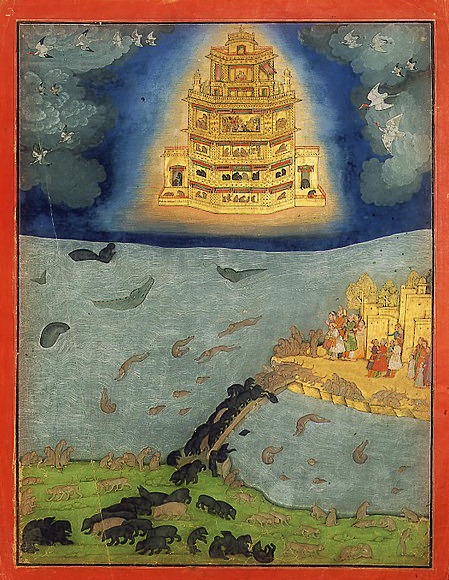
Ancient depiction of a Vimana in the sky
When archaeologists discovered the extremely ancient city of Mohenjodaro in Pakistan near India, they excavated some pretty perplexing things. Skeletons were littered throughout the streets in odd positions like there was some approaching doom. There were even skeletons holding hands as if some sort of destruction had overtaken them all in an instant. The mystery of what happened to these people goes even deeper. Because the skeletons were insanely radioactive. About on par with the skeletons found at Hiroshima and Nagasaki. The Japanese cities destroyed by atomic bombs during WWII. Which makes no sense at all. There seem to be many archaeological sites in India that defy explanation though. Near Bombay, there’s a massive crater that has no trace of any meteoric material. Even though evidence shows it formed from instantaneous intense heat. So there are actually many sites in India that defy what we know about history.
With all these puzzling enigmas it’s no wonder ancient alien theorists have a field day concerning the Mahābhārata. Especially with all this ancient technology that could be interpreted as advanced weaponry. Conspiracy theorists have concluded that the abrupt halt of all archaeological investigations into Dwarka is some clandestine cover-up. As if perhaps they discovered something the powers that be don’t want people to know about. Such as the discovery of advanced ancient technology. Which is bizarre a conclusion to draw? Who knows though? For every nine conspiracy theories that are B.S., there’s always one that’s true. But the Indian government pretty much-guaranteed conspiracies on the subject the moment they banned any more research on Dwarka. And if there’s one thing I’ve learned concerning the unexplained, it’s that people need very little reason to come to pretty out there conclusions.
[the_ad_placement id=”manual-2″]
The site Dwarka is located at is only 70ft underwater. Further excavation of the site would be simple with modern technology. Shouldn’t the world know such an advanced city existed long before accepted human civilization even began? Well, if the city is truly as old as some claim I mean.

Shooting dude’s heads as they fly through the air with arrows is pretty nifty
In the Mahābhārata, Krishna’s city was attacked by an enemy king. He attacked Dwarka with Vimana (the flying aircraft) which rained energy projectiles down on the city that resembled lightning. Krishna retaliated by firing weapons that roared like thunder and resembled rays of the sun. Gotta admit that sound pretty sci-fi, or at least modern weaponry. Also, there are four different versions of the mythological fate of Dwarka. Some say the blue-skinned Krishna departed the Earth. Others that Krishna was struck by a stray arrow while meditating. But all legends lead to the same conclusion for the city. Dwarka became submerged under the ocean.
This fascinates me because ancient civilizations across the world pretty much all share a flood myth even though they never had any contact with one another. These flood myths can also be verified by science because there was indeed a global cataclysm at the end of the last ice age. It caused worldwide flooding around 10,000- 15,000 years ago (theories vary). It was a deluge that no doubt destroyed many pre-history human communities.
This is where some theories regarding Dwarka get controversial. You have to ask yourself if you’re o.k. with the idea, there were human civilizations millennia before the accepted version of history even began. This idea usually leads to two extremely opposing opinions. Many can’t pull away from mainstream opinions regarding human history. Which is fine. But, then there’s those more open to the idea all isn’t what it seems. Which can open a can of worms, and lead to the conclusion that human history is a much more unknown subject than we would be led to believe through mainstream sources? Knowing how governments and kings have worked throughout the centuries, it’s not unreasonable to think much of accepted history as we know it could be questionable at best.
“History is the lie commonly agreed upon.”
-Voltaire
Is there a logical reason why the Indian government would ban any more research or excavations on the sunken city of Dwarka? I mean, they were finding tons of artifacts right and left. The first thing most would think of would be a lack of funding or something. But, that’s simply not the case. In any of the projects by archaeologists throughout the 20th century, they had all the funding they could ever want or need. If anything the site should be the crown jewel of India’s archaeological legacy. It basically proves that a mythical city from their most revered sandscript texts actually existed. Why would the Indian government halt all exploration of the ruins and forbid any new investigations? It doesn’t seem to make sense.
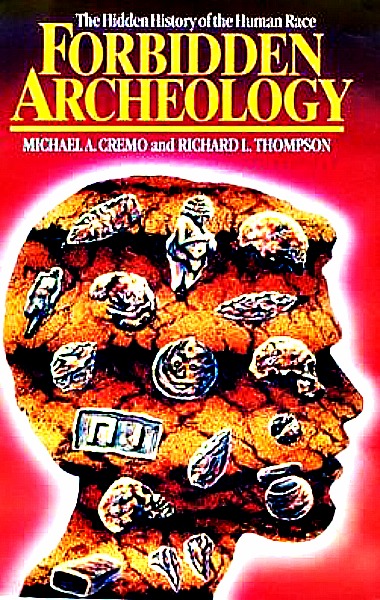
Amazing book fyi
There’s a well-known book called Forbidden Archaeology: The Hidden History Of The Human Race released back in 1993 written by Michael A. Cremo and Richard L. Thompson. Cremo is a self-identified Vedic archaeologist. Because he believes his research very much supports the history of humanity described in the Indian Vedas to be factual. And that the modern scientific community suppresses fossil evidence among other proof that humanity is far more ancient than currently accepted. The book gained attention from tons of different groups around the world and hasn’t waned in popularity since its release. The book inspired a huge resistance to the mainstream scientific community that persists until this day. Which is both good and bad.
[the_ad_placement id=”manual-2″]
A consistent theme throughout the book is a phenomenon called Knowledge Filtration. This is a common process in human psychology in which people consistently accept evidence which backs up their own pre-conceived ideas and opinions that support their egos and worldviews. While at the same time ignoring or denouncing evidence that doesn’t coincide with the way they look at things. Now, this happens to everyone for the most part. But especially scientists or people who think they’re more intelligent than others. It can happen consciously, but most of the time it happens unconsciously. Like, in the subconscious. It’s a weakness that’s been a thorn in the side of human development throughout our history. People only want to hear what the already believe. And they’ll only accept as fact what they’ve already wrapped their worldview around. Things that shake up that worldview are often aggressively opposed.
So, when powerful groups of scientists have their own bias opinions it creates a Knowledge Filter that can obscure actual scientific facts. Sometimes for centuries. Which have lead to many tragedies and the loss of great minds. Such as burning people at the stake in the name of God for saying the stars were all individual suns for example. Anything outside of accepted views of consensus reality is suppressed no matter how objective the evidence may be. The Knowledge Filter often reacts in outrage if questioned. Pissing people off if you say anything that shakes up their worldview.
The book Forbidden Archaeology: The Hidden History Of The Human Race threatened establishment mainstream archaeology to the point they lobbied the Federal Communications Commission to suppress an NBC- TV special covering it. They wanted the Feds to censure, fine, and ban the program. They lost in their attempted censorship, and further showed the people that the mainstream scientific community really isn’t as trustworthy as they may seem. Their credibility is important to exclusive monopolies of funding, intellectual authority, and social prestige. So the mainstream archaeological community often conducts witch hunts on any who oppose their views. Michael A. Cremo and Richard L. Thompson were no different. Censorship is never healthy for a free society seeking to progress their civilization for the better, no matter how many people it may offend. So they REALLY hate it when any evidence is discovered that goes against their consensus thought.
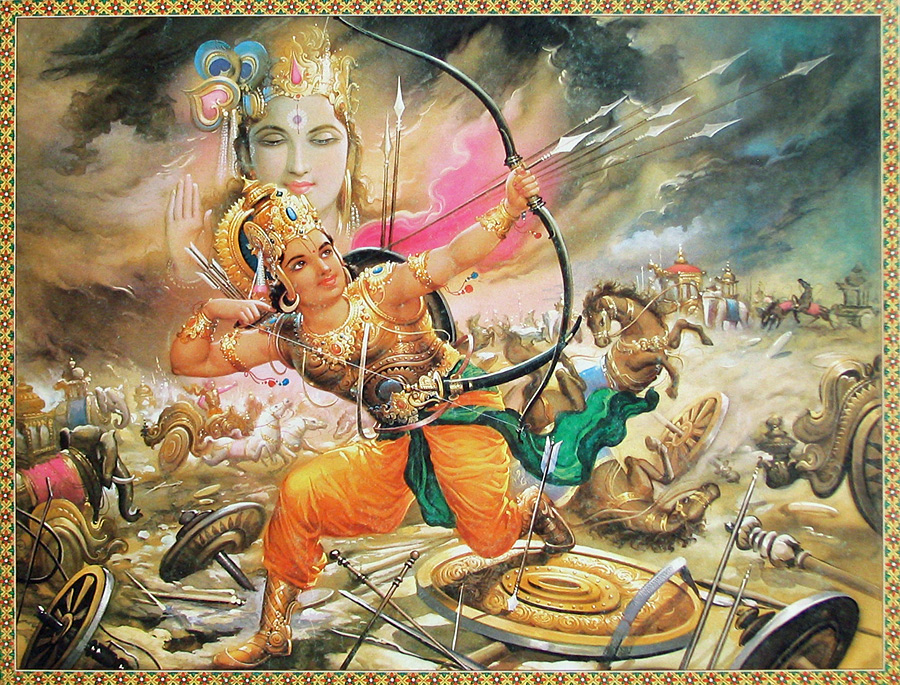
These tales are so epic
In the West, our history books only say human civilization goes back 6,000 years or so. Which makes places like Dwarka inconvenient considering how ancient the carbon dating of relics found there are (if they’re reliable.) I honestly find some of this so-called carbon dating concerning Dwarka to be questionable. Especially since some artifacts are allegedly 32,000 years old. But there’s enough concerning Dwarka for me to reasonably believe there’s more to it than meets the eye.
A very respected Indian astronomical expert named Dr. Narahari Achar discovered some very interesting things concerning astronomical references in the Mahābhārata. And with modern technology astronomical cycles can be mapped with advanced software. Giving experts the ability to judge time-based off the alignment of the stars. Dr. Narahari had input the astronomical references mentioned in Krishna’s tale from the Mahābhārata through this software. By doing this he came to the conclusion the city of Dwarka was at its peak around 3067 B.C.E. Which is a mere 5,000 years ago. The writers of the Mahābhārata were very precise in referencing planetary alignments. Which, to some, adds a lot of validity to Dr. Narahari’s work. The authors of the text had a deep understanding of astronomy that translates pretty well with our modern-day technology. Though dates go back even further depending on which parts of the Mahābhārata are being referenced.
[the_ad_placement id=”manual-2″]
You may think Dr. Narahari Achar’s findings prove the sunken city of Dwarka is no older than 5,000 years or so. That’s actually not the case. Just like Zecharia Sitchin’s translations of the Sumerian texts concerning the Anunnaki, Dr. Narahari’s findings don’t hold up to objective scrupulation. He translated many of the texts according to his own understanding. When there are actually multiple ways to view them. He also doesn’t take into account many planetary references. Seeming to selectively add them to his software. Which is both unscientific and illogical? So while interesting, it’s objectively faulty and unreliable data. It looks like Dr. Narahari Achar also suffers from Knowledge Filtration, and his research is far from accurate.

Many of the tales in the Mahabharata are sci-fi in nature
The truth about Dwarka may never be known. The seeming sci-fi stuff like the Vimana flying machines attacking the city is extremely fun to think about. As well as all the other stuff in the Mahābhārata that some people translate as advanced technology. Dwarka was no more than a legend in Indian culture before the 20th century. Until the ban’s lifted we’ll just have to make do with what little information we have. During the time it was under active excavation, the archaeologists brought lots of debris to the surface. Like sculptures, pottery, beads, building materials, pieces of walls, and even human bones and teeth.
[the_ad_placement id=”manual-2″]
But who knows, further excavation may lead to a letdown and prove Dwarka isn’t nearly as grand as forbidden archaeologists would like to believe. However, if Dwarka really is over 12,000 years old, that means it’s older than the Egyptians, Chinese, and Sumerian civilizations by thousands of years. Going back possibly to before the last ice age. This would radically change the accepted view of human history on this planet. Dwarka and its alleged advanced technology found in the Mahābhārata is incredibly fascinating to think about. Even if the more bizarre perspectives on the sunken Atlantis of the East is unprovable.
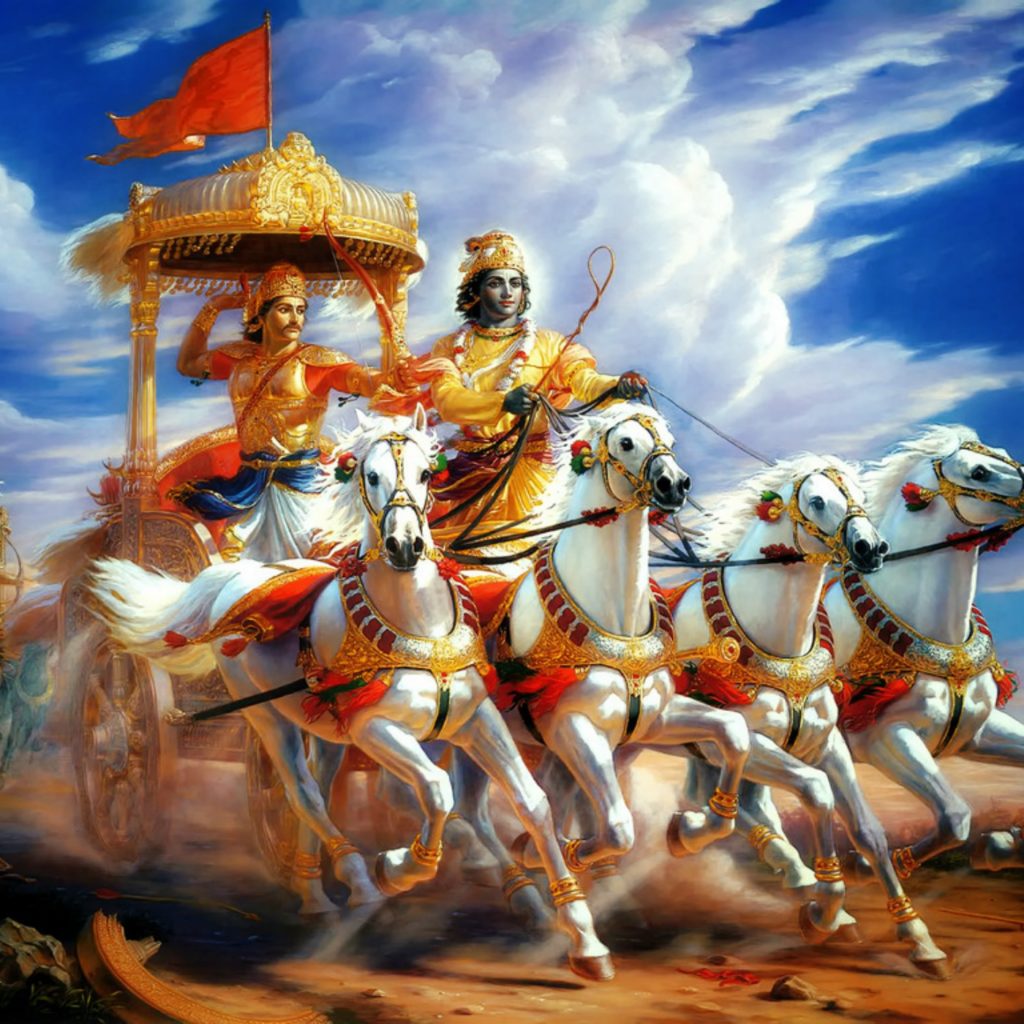
Indian myth is very important to world history


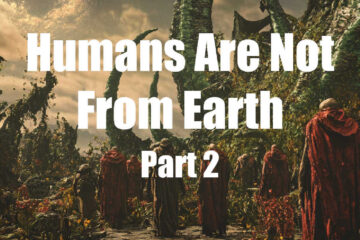

0 Comments